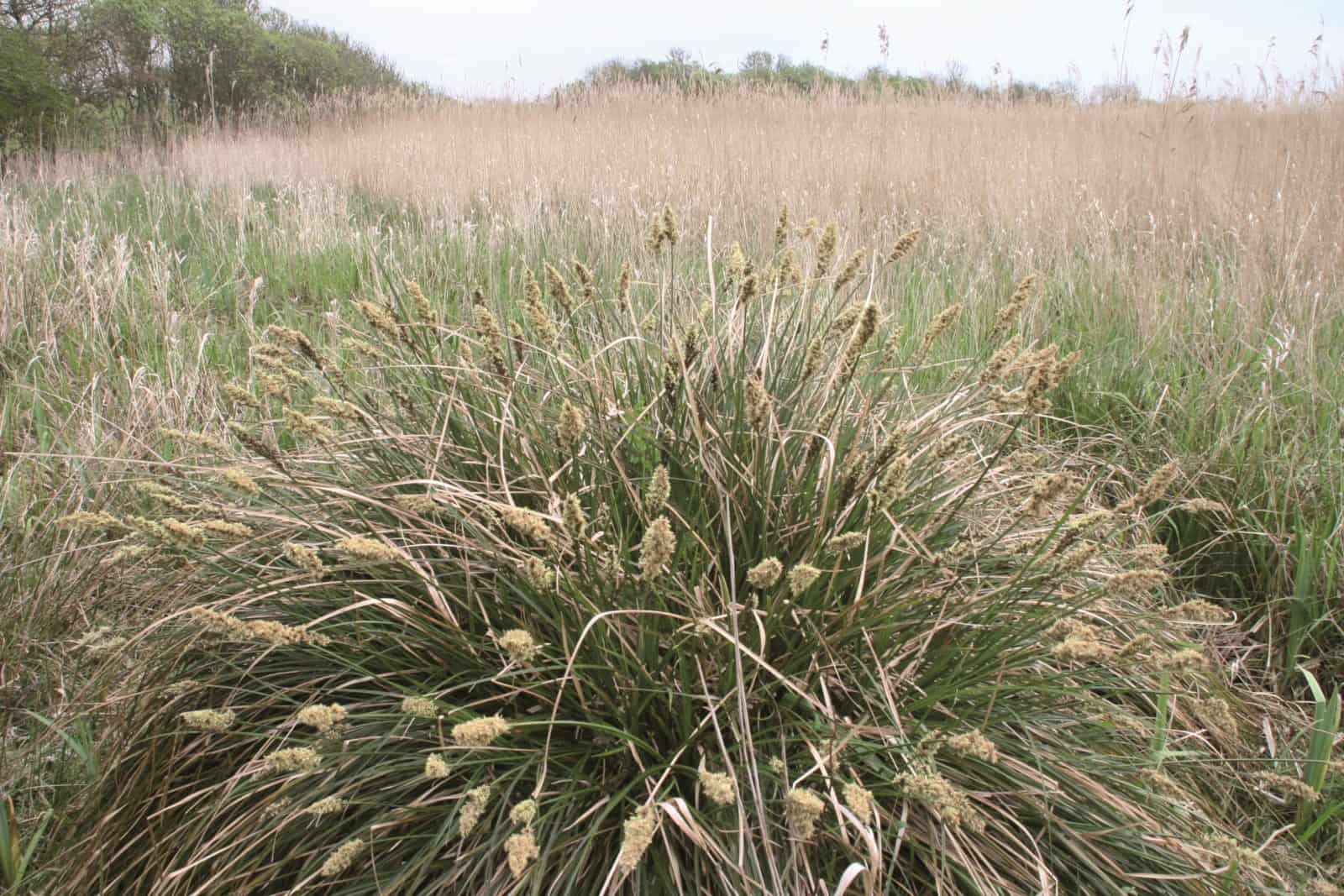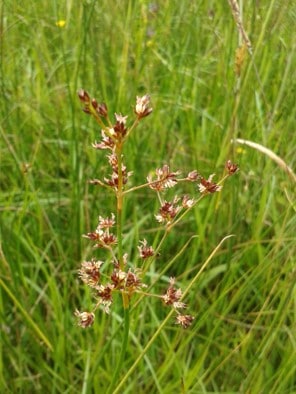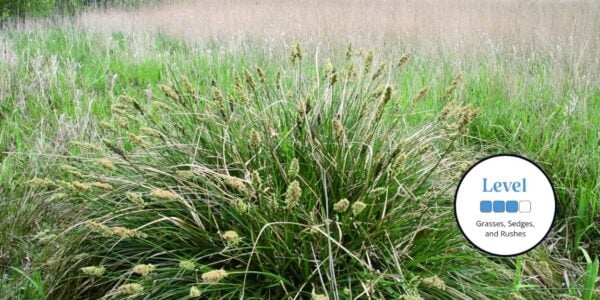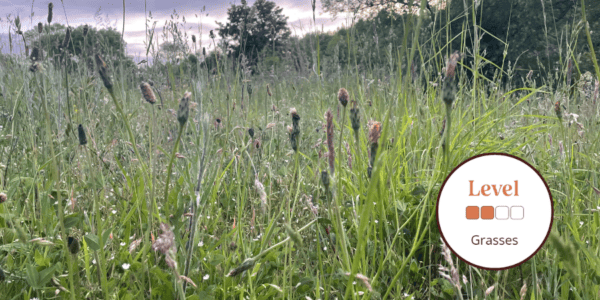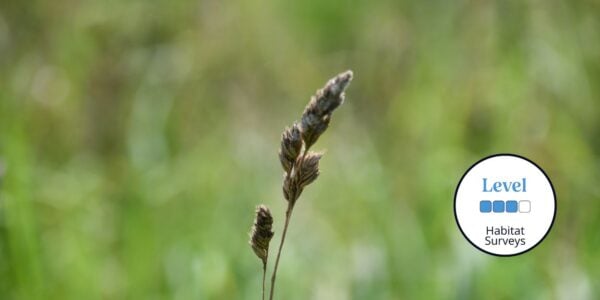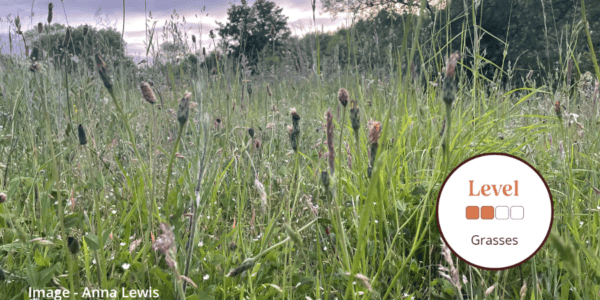This Grasses, Sedges and Rushes course will give you an understanding of the difference between these species and how you can start identifying them.
Knowledge of these plants can help show you what national vegetation type you are standing in, an essential skill for any working in the ecology sector.
This beginner/intermediate course will combine a mixture of field visits to a range of contrasting sites with classroom and lab sessions, allowing you to become confident with these three distinct groups. Grasses and grass-like plants form a key component of most plant communities yet are notoriously difficult to identify. Accurate identification is essential for site survey and management and a botanist’s skill is often judged by their ability to ‘do’ grasses, sedges and rushes. There will be an introduction to the flowering parts and vegetative features as well as the use of simple identification keys. This course will be a fun and engaging introduction with the support of like-minded individuals and an expert tutor.
You will spend your time on the beautiful Isle of Cumbrae on the Firth of Clyde, West Scotland at our Millport centre surrounded by the rich history as a marine research station.
PLEASE NOTE the course fee is for tuition only. There is no accommodation provided with this course. If you would like to book accommodation, lunch and an evening meal at Millport please email [email protected]
The course is for anyone interested in improving their ability to identify and understand the ecology of British grasses, sedges and rushes.
Who Should Attend?
Nature enthusiasts, Students, Early career ecologists, Citizen scientists, Volunteer surveyors, gardeners, general interest
Knowledge Level
Beginner. Level descriptors can be found on the following webpage: Framework and Course Level Descriptors
Prior Knowledge
A basic understanding of plants would be beneficial but no specific experience is needed for this course. Just a willingness to explore and learn.
What will be covered during this course?
-
- Introduction to botanical vocabulary
- Combination of seminars, laboratory identification sessions and practical fieldwork.
- Introduction to the characteristics of the grasses, sedges and rushes
- Comparative analysis of vegetative and flowering parts of grasses, sedges and rushes
- Using a range of dichotomous keys to identify species and strategies to identify
By the end of the course, you will be able to:
-
- Describe the differences between grasses, sedges and rushes
- Describe the flowering part and vegetative features of plants of these three families
- Identify a selection of common species using a range of dichotomous keys
- Explain how certain species are associated with certain habitats
- Share this knowledge with friends, family and fellow volunteers.
The course gives you the opportunity to immerse yourself in a new subject and acquire novel skills. Our fantastic tutor will combine the use of classroom-led learning and outside learning opportunities to give individuals the skills and confidence to learn more about grasses.
-
- See the ‘Example Timetable’ and ‘What’s Included’ sections below for more information about this course.
- Upon booking you will need to provide individual details of all attendees
- Please email [email protected] if you have any questions.
Group Bookings Made Easy
If you have a group of 10 or more individuals wanting to complete one of our courses, our team are available to discuss your options – from discounts to private team courses.
-
- Discounted rates
- Privately run courses for your group
- Bespoke courses developed specifically for your needs
Click here for more information!
If we are unable reach viable numbers for this course, we will inform you of the course cancellation 14 days prior to the course run. We would recommend when purchasing accommodation and/or travel you should take out your own insurance.
Tutor: Judith Allinson
Judith Allinson is a former member of FSC staff and co-author of the AIDGAP Key to the Vegetative Stages of Grasses. She spent several years carrying out botanical surveys for English Nature. She has run the Grass Identification in Spring course at Juniper Hall for a number of years and has also taught grass identification courses at Kindrogan, Nettlecombe Court and Malham Tarn Field Centres.Book with Confidence
We understand the difficulties of making plans in the current situation when guidelines continue to change, and insurance conditions are being tightened. In response, we will continue to offer additional flexibility. Find out more here
Example Timetable
Example Timetable
This timetable is subject to change but should give a clear outline of what to expect
-
- Please arrive in time for the course to start promptly at 9:30am
- The course will end at 5:00pm
Day 1
| 9:30am | Welcome, H&S, introductions |
| 10:00am | Seminar - Introduction to the structure of grass flowers |
| 11:15am | Break – refreshments not provided |
| 11:30am | Field Session - Close to the centre to collect common grasses and rushes |
| 12:30pm | Lunch - not provided |
| 1:30pm | Seminar - Introduction to rushes |
| 2:00pm | Classroom session to sort and press specimens |
| 3:00pm | Break – refreshments not provided |
| 3:15pm | Seminar - Introduction to sedges |
| 4:00pm | Field Session - Look at neutral grassland and stream plants, practice using keys |
| 5:00pm | Finish |
Please note accommodation, refreshments and an evening meal are not included
Day 2
| 9:30am | Welcome, recap |
| 10:00am | Field Session - Walk to look at Grasses, Sedges and Rushes in this wetland area |
| 12:00pm | Lunch - not provided |
| 1:00pm | Continued field time |
| 3:00pm | Classroom session covering:
|
| 4:30pm | Classroom plenary and final questions |
| 5:00pm | Finish |
What's Included
What’s included?
- Classroom learning covering the theory of the subject
- Field excursions to apply new knowledge
- Expert tuition for which the FSC is renowned
- Clear objectives and progression
You can rest assured that the absolute best content from an expert in environmental education will be provided. In choosing an FSC course, you will be joining thousands of people who learn with us each year.
PLEASE NOTE the course fee is for tuition and refreshments only. If you would like to book accommodation and meals, including packed lunches, at FSC Millport please email [email protected]
Before You Attend
There will be a member of staff with first aid training and access to a first aid kit on site. If you have special medical or access requirements, please let us know as soon as possible so we can make any necessary adjustments.
What to Bring
- Stout walking shoes or boots
- Outdoor clothing suitable for all potential weather conditions
- Sandwich box, vacuum flask / drinks container
- Small rucksack or bag
- Field notebook and pencil
- Dissecting kit (scalpel and forceps) – if you have a set, although these should be available to borrow for the course.
- x10 or x20 hand lens if you possess one*
*Available to purchase from the Centre Shop
Useful books and resources:
- Cope, T & Gray, A. Grasses of the British Isles: BSBI Handbook 13, 2009
- Fitter, R. et al. Grasses, Sedges, Rushes & Ferns of Britain & Northern Europe: Collins 1984.
- Hubbard, CE. Grasses (3rd ed): Penguin Books 1984
- Jermy, AC et al. Sedges of the British Isles: BSBI Handbook 1 (3rd ed.), 2007
- Poland, J. & Clement, E.J. The Vegetative Key to the British Flora. BSBI, 2010.
- Rose, F. Colour Identification Guide to the Grasses, Sedges, Rushes & Ferns of the British Isles and NW Europe: Viking, 1989
- Stace, C. New Flora of the British Isles (3rd ed), C.U.P. 2010
- Stace, C. Field Flora of the British Isles: C.U.P. 1999.
Sorry this course has ended

